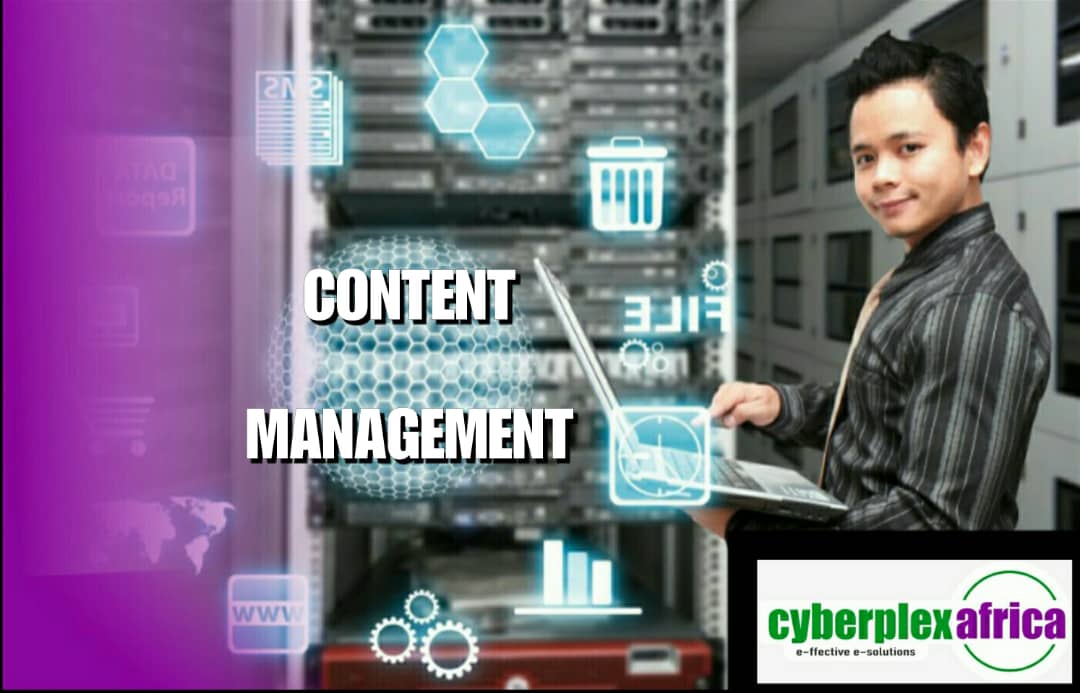
CONTENT MANAGEMENT
CONTENT MANAGEMENT
Understanding Content Management
As Jeffrey Veen once said “Content Management is not a software problem at all. It is a process problem” (http://adaptivepath.org/ideas/e000315/) we could not agree more with that. Content Management is basically the collection and administration of digital content which could be in form of images, videos, multimedia, audios or articles from its creation to permanent storage or deletion.
Having a Content Management strategy in place prior to selecting a Content Management System is more important than most people realize. Often people or organisations will pick a Content Management System with the expectation of it automatically solving all their workflow issues. This approach almost always lead into disappointment or in the worst case, a decision to scrap the Content Management System and go with an alternative solution.
In most cases it is not the failure of the Content Management System but rather the failure to recognize that Content Management is a process that needs to be examined, planned for and executed in a way that fits the organization and the nature of the content itself.
Who Needs Content Management?
It does not matter if it is a single individual needing to find a more efficient way to reuse and update content or a large organization needing to create, track and repurpose content over multiple channels. If your business does not have a plan in place prior to selecting their Content Management System, this allows the Content Management System to detect the process and not the other way round. With that in mind, below is the overall process of Content management before discussing some individual Content Management tips in greater detail.
CONTENT MANAGEMENT AS A PROCESS
1. TEAM ANALYSIS
This is the most often overlooked or ignored. It is assembling a team to review or oversee the Content Management of the business. This happens because people either assume they know how the process should work, assume the person in charge of the Website Development will handle it or perhaps worse of all, simply fail to see the importance of it. Which is a shame because without this step, the Content Management process tends to lack direction and a clear purpose.
For small businesses, a single person could be appointed but for larger or medium sized organizations, this should be a small team that is populated with members across the different departments in the organization. This should also include people who work day to day with the systems and content along with the decision makers. The team should;
- Audit the current Content Management policies and workflows,
- Identify problems,
- Structure a content workflow that is ideal for the organization.
One of the best way to do that is identifying and then consulting with any department that creates, works with, approves or touches the content in any way. While this could be a one
time assessment it is a better idea to keep this team as a living body to monitor and oversee the workflow overtime. This makes it easier to identify inefficiencies before they crop up or predict how needs might change.
2. CONTENT & WORKFLOW STRATEGIES
Once the internal processes are reviewed, the team can begin to craft strategies for content and workflow. The team should focus on both the content as well as defining the workflow for how internal teams are going to create, publish and organise the content.
- Content Strategy
The team should focus on identifying all types of content that will be created and managed by the internal teams and how they can be organized and categorized. It is at this stage that categories, tags and other types of meta data should be identified and structured as well as how relationships between content types should be defined.
- Workflow Strategy
Defining this process will help identify all the teams that are part of the management process and help clearly define their roles. The workflow strategy main focus should be on the path of the content as it moves through the organization. Content should be tracked from the creation, to injection, to editing, approval and finally publishing.
Flowcharts should also track how content is to be edited, versioned, archived or repurposed.
3. CHOOSING A CONTENT MANAGEMENT SYSTEM
All the above should then be analysed and filtered on what is achievable in the organization taking into consideration factors like manpower and commitment level to building an efficient content workflow. It is at this level that the business should start architecting their Content Management System. This could be something built internally, the result of customizing an existing solution or the result of searching for and finding an Content Management System that will be able to enable the business workflow.
By saying Content Management is a process and then identifying how this process should work within the organization, the company can find a Content Management System solution that enables the organization to work the way that it should, based on its structure and content needs.
CONTENT MANAGEMENT TIPS
Content Management is the buzzword of 2018 so it is highly important to know that it is mostly about strategy, creative value for the business as a brand and its audience. When going into Content Management it is important to know what the business is about, its values and also what the business audience is. This would not count as one of the tips but as the philosophy behind effective Content Management versus just being spam.
- Clear Communication Strategy – This means knowing the tone casual, professional or academic depending on the business’ target audience.
- Knowing The Audience – It is of great importance to know the tone or communication strategy and the audience as they are in direct alignment because one will detect the other. This should also be about what the audience needs from the content and whether or not the content will be relatable.
- Understanding the Context of the Platforms – Content Marketing on Youtube is very different from Content Marketing on a Blog. They all appeal to different people and equally important, they all have a different practical business application therefore one can not repurpose content and attack the same methods on different platforms.
- Respecting the Audience’s Time – When doing content, give the audience upfront values by telling them why they are there whether it is on a blog post, video live or print so that they can decide whether to tag along and invest their time there or not.
- Calls to Action/ Right Hooks – Basically this is Aligning the content to Business OBJECTIVES and GOALS. Too many people, too many marketers make content without no real business survey or business objective tied to what the content is supposed to accomplish.
If your business has questions on Content Management or is struggling in any way, feel free to reach out to us at sales@cyberplexafrica.com. ( http://cyberplexafrica.com/contact-us/ )









